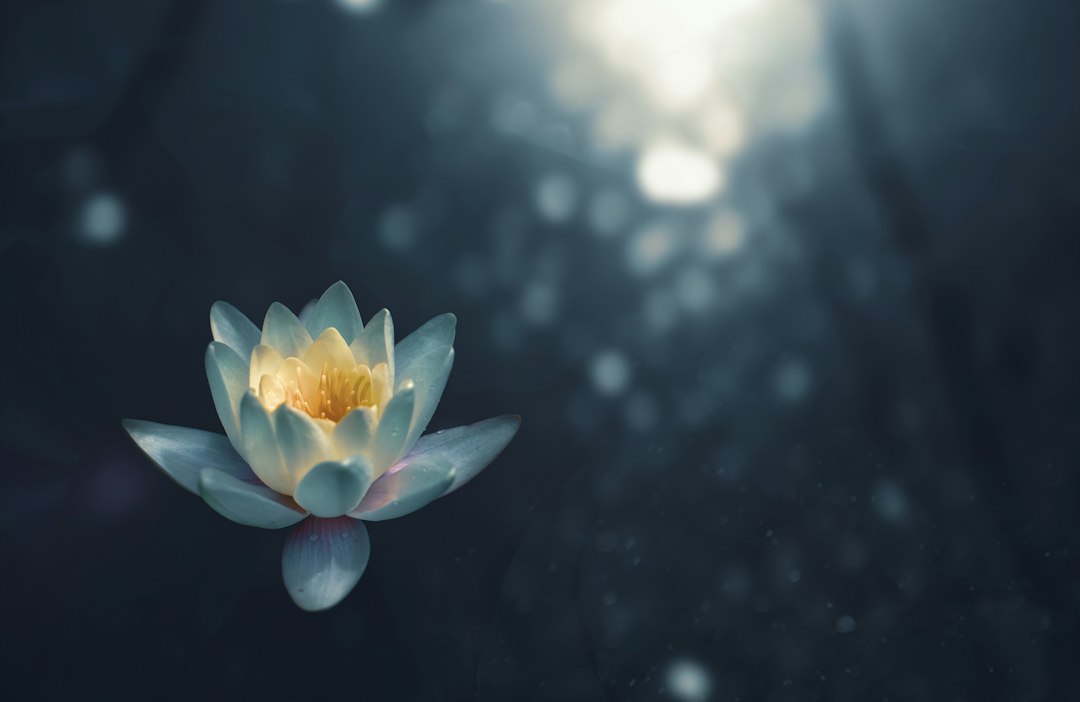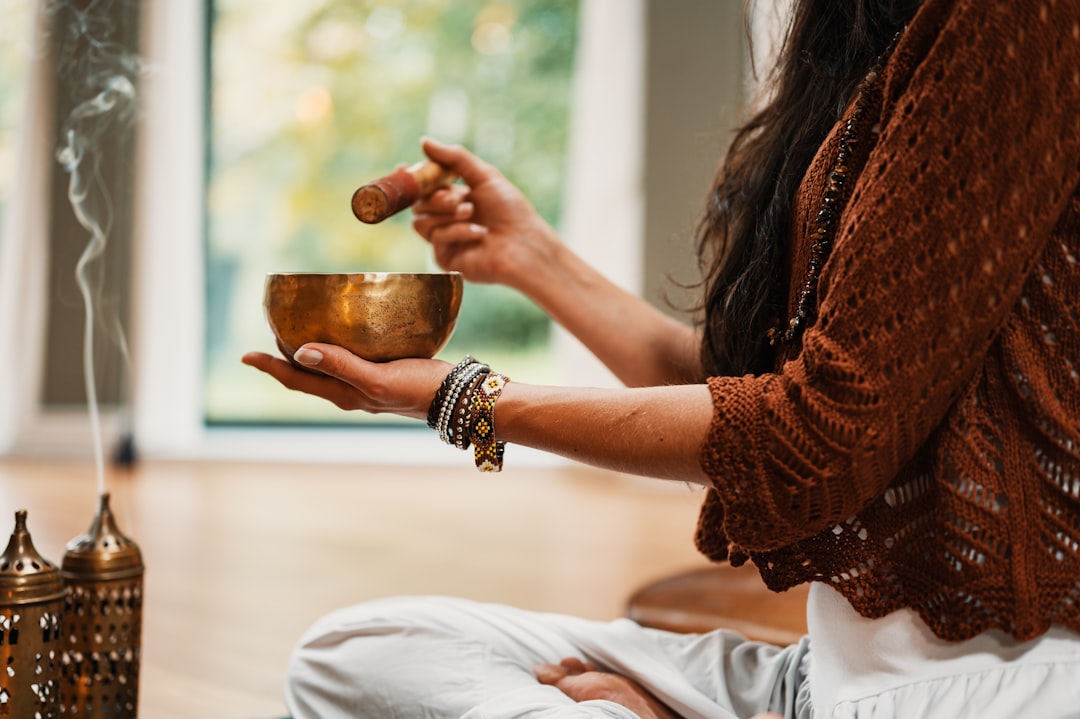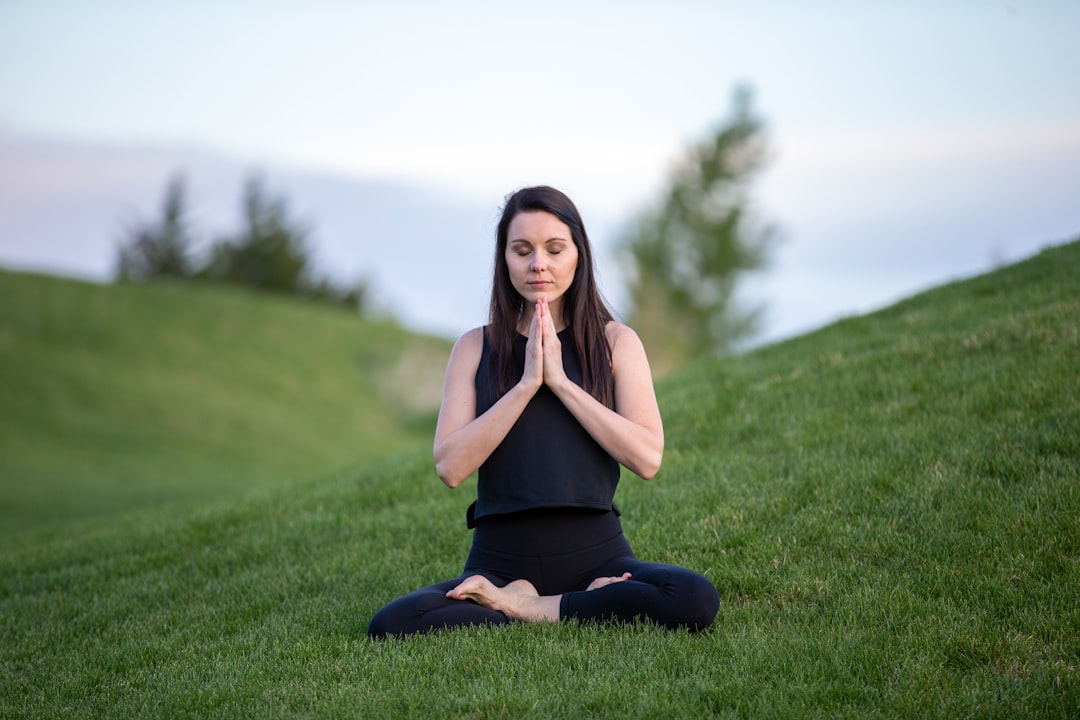Welcome to our blog post on cultivating inner peace through mindfulness techniques! In today’s fast-paced and demanding world, it’s becoming increasingly difficult to find a sense of calm amidst the chaos. However, with the practice of mindfulness, we can tap into our inner reserves and find a lasting peace that can positively impact every aspect of our lives.
Mindfulness is a centuries-old practice that has gained significant attention in recent years due to its numerous benefits for mental, emotional, and physical well-being. It involves bringing our awareness to the present moment without judgment, allowing us to fully experience and appreciate each passing moment.
In this blog post, we will explore various mindfulness techniques that can help you cultivate inner peace. These techniques are simple, accessible, and can be easily incorporated into your daily routine. Whether you’re a beginner or have some experience with mindfulness, there’s something here for everyone.
Before we delve into the techniques, it’s important to acknowledge that finding inner peace is a personal journey. What works for one person may not work for another, and that’s perfectly okay. The beauty of mindfulness is its adaptability – you can tailor it to suit your unique needs and preferences.
So, grab a cup of tea, find a cozy corner, and let’s embark on this journey towards inner peace together. Remember, be open-minded, take what resonates with you, and leave behind what doesn’t. Let’s explore these mindfulness techniques and discover the transformative power they hold.
Understanding mindfulness and its connection to inner peace
In today’s fast-paced and demanding world, finding inner peace is becoming increasingly essential. Many people are turning to mindfulness as a powerful tool to help them navigate the challenges of everyday life and cultivate a sense of tranquility within themselves. But what exactly is mindfulness, and how does it connect to inner peace?
Mindfulness is the practice of being fully present and engaged in the current moment, without judgment. It involves bringing attention to our thoughts, feelings, sensations, and surroundings with a curious and non-reactive attitude. By directing our focus inward and observing our experiences without resistance or attachment, we create space for self-awareness, acceptance, and ultimately, inner peace.
Inner peace, on the other hand, is a state of mind characterized by a deep sense of calm, contentment, and harmony. It is a state where we feel centered, grounded, and connected to ourselves and the world around us. Inner peace allows us to let go of stress, anxiety, and negative emotions, paving the way for greater clarity, joy, and well-being.
So, how does mindfulness help us achieve inner peace? The practice of mindfulness encourages us to slow down, quiet the mind, and become aware of our thoughts and emotions without getting entangled in their stories. By observing our inner world with kindness and curiosity, we develop a deeper understanding of ourselves and our patterns of mind, fostering self-compassion and self-acceptance.
When we are mindful, we become less reactive to the ups and downs of life. We learn to observe our thoughts and emotions without judgment, allowing them to come and go like passing clouds in the sky. By cultivating this non-judgmental awareness, we create a distance between ourselves and our thoughts, freeing ourselves from their grip and reducing stress and anxiety.
Furthermore, mindfulness enables us to bring our full presence and attention to the present moment. Rather than being caught up in regrets about the past or worries about the future, we learn to fully experience the here and now. This heightened sense of presence enhances our ability to engage with life, savoring the simple pleasures and finding beauty in the ordinary.
By practicing mindfulness and connecting with our inner selves, we gain the tools to navigate life’s challenges with greater ease and grace. We develop the capacity to respond rather than react, making conscious choices that align with our values and priorities. Mindfulness becomes a way of life, a guiding principle that supports our journey towards inner peace.
In the following sections of this blog post, we will explore different mindfulness techniques that can help you cultivate inner peace. Each technique offers a unique approach to mindfulness, allowing you to find what resonates with you the most. So, let’s dive in and discover the transformative power of mindfulness in cultivating inner peace!
Furthermore, mindfulness enables us to bring our full presence and attention to the present moment.
Technique 1: Breath awareness and deep breathing exercises
Welcome back to our exploration of mindfulness and its connection to inner peace. In this section, we will delve into the first technique that can help you in cultivating mindfulness – breath awareness and deep breathing exercises. This technique serves as a solid foundation for your mindfulness practice, allowing you to anchor your attention to the present moment and nurture a sense of calmness within.
The breath is a powerful tool that is readily available to us at all times. Through conscious awareness of our breath, we can tap into the present moment, grounding ourselves in the here and now. This technique involves paying attention to the sensations of your breath as it enters and leaves your body. You don’t need any special equipment or specific location to practice breath awareness; you can do it anywhere, anytime.
To begin, find a comfortable position, either sitting or lying down. Close your eyes if it feels comfortable for you, or simply lower your gaze. Take a deep breath in through your nose, feeling the air fill up your lungs, and exhale slowly through your mouth, releasing any tension or stress with each breath. Allow yourself to relax and let go of any thoughts or distractions.
Now, bring your attention to the sensation of your breath. Notice the coolness of the air as you inhale, followed by the warmth as you exhale. Feel the rise and fall of your abdomen or chest with each breath. As you continue to breathe, become fully present in the moment, focusing solely on the physical sensations of your breath without judgment or analysis.
If your mind begins to wander, gently guide your attention back to your breath. It’s natural for thoughts to arise, but instead of getting caught up in them, observe them like passing clouds and bring your awareness back to the breath. With practice, you will cultivate a greater ability to anchor your attention, and your mind will become more calm and focused.
In addition to breath awareness, incorporating deep breathing exercises can further enhance the relaxation response and promote inner peace. Take a moment to try a simple deep breathing exercise:
1. Inhale deeply through your nose for a count of four, allowing your abdomen to expand as you fill your lungs with air.
2. Hold your breath for a count of four.
3. Exhale slowly and completely through your mouth for a count of four, emptying your lungs completely.
4. Pause briefly without inhaling for a count of four.
5. Repeat this cycle several times, focusing on your breath and the gentle rhythm it creates.
As you engage in breath awareness and deep breathing exercises, remember that the goal is not to force or control your breath but to observe and attune to it. Be gentle and patient with yourself as you develop this practice, adapting it to your own comfort and needs. With regular practice, you will gradually deepen your ability to experience inner peace and mindfulness in your everyday life.
In the next section, we will explore technique 2: practicing self-compassion and self-care. Stay tuned!
If your mind begins to wander, gently guide your attention back to your breath.
Technique 2: Practicing Self-Compassion and Self-Care
Welcome back to the fourth part of our mindfulness journey! In this section, we will explore another powerful technique that can help you cultivate inner peace and harmony – practicing self-compassion and self-care.
Life can be hectic and challenging, and it’s essential to prioritize your well-being amidst the chaos. This technique encourages you to treat yourself with kindness and understanding, just as you would treat a beloved friend or family member.
Self-compassion involves recognizing your own suffering, acknowledging that it is a universal human experience, and responding to yourself with empathy and warmth. By practicing self-compassion, you can foster a deeper sense of self-acceptance and develop a more forgiving attitude toward your own shortcomings and mistakes.
So, how can you incorporate self-compassion into your daily life? Here are a few suggestions:
1. Practice mindful self-acceptance:
Start by acknowledging and accepting your current thoughts, emotions, and physical sensations without judgment. Rather than criticizing or ignoring them, simply observe and accept them as part of your present experience. Cultivating this non-judgmental awareness can help you break free from self-critical patterns and promote self-compassion.
2. Treat yourself with kindness:
Imagine you are your own best friend. How would you speak to them when they are going through a difficult time? Extend the same kindness, understanding, and supportive words to yourself. Be gentle and compassionate in your self-talk, offering yourself words of encouragement and reassurance.
3. Prioritize self-care:
Make self-care a non-negotiable part of your routine. Engage in activities that nurture your body, mind, and soul. This could include taking relaxing baths, going for walks in nature, practicing yoga, reading uplifting books, or engaging in any hobby that brings you joy and relaxation. Remember, self-care is not selfish; it is a vital aspect of maintaining your overall well-being.
4. Embrace imperfection:
We often strive for perfection, setting high standards for ourselves that can lead to self-criticism and disappointment. Instead, recognize that perfection is an unattainable goal. Embrace your imperfections as part of what makes you unique and special. Allow yourself to make mistakes and learn from them, treating them as valuable opportunities for growth and self-improvement.
By incorporating self-compassion and self-care into your daily life, you can create a nurturing and supportive environment within yourself. Remember, the relationship you have with yourself sets the tone for how you relate to the world around you.
Continue on to the next section as we explore another technique that will further enhance your mindfulness journey – engaging in mindful meditation and visualization.
Life can be hectic and challenging, and it’s essential to prioritize your well-being amidst the chaos.
Technique 3: Engaging in Mindful Meditation and Visualization
In our quest for inner peace and mindfulness, we come across various techniques that can help us cultivate a state of well-being. One such powerful technique is mindful meditation combined with visualization. It allows us to delve deeper into our consciousness, connect with our inner selves, and create positive shifts in our mindset.
Mindful meditation involves focusing our attention on the present moment, observing our thoughts, sensations, and emotions without judgment. By being fully present, we can let go of the worries of the past or future and embrace the beauty of the present. Visualization, on the other hand, is a technique that uses the power of imagination to create a mental image or scenario that promotes relaxation, healing, or personal growth.
When we combine mindful meditation with visualization, we open ourselves up to a world of possibilities. Let’s explore some ways we can engage in this technique and experience its benefits.
1. Find a quiet and comfortable space: To engage in mindful meditation and visualization, it’s essential to find a peaceful environment where you won’t be disturbed. Choose a spot in your home or outdoors that resonates with you, ensuring you have a comfortable seat or cushion to support your posture.
2. Set the intention: Before diving into the practice, take a moment to set your intention. Ask yourself what you hope to achieve through this meditation and visualization. It could be finding inner peace, gaining clarity, or simply reconnecting with yourself. By clarifying your intention, you align your focus and energy towards your desired outcome.
3. Begin with mindful breathing: Start your session by focusing on your breath. Take slow, deep breaths, allowing your belly to rise and fall with each inhalation and exhalation. Notice the sensations of your breath, without trying to change it. This simple act of breath awareness helps ground you in the present moment, preparing you for the visualization practice ahead.
4. Choose your visualization: Now, it’s time to select a visualization that resonates with your intention. It could be anything from imagining yourself in a serene natural setting to picturing vivid scenes of personal achievement or growth. The key is to create a mental image that evokes positive emotions and supports your desired outcome.
5. Engage your senses: As you immerse yourself in your visualization, engage all your senses to make the experience more vivid. See the colors, feel the textures, hear the sounds, and even imagine the pleasant scents associated with your visualization. The more you involve your senses, the more real and impactful your visualization will become.
6. Cultivate mindfulness throughout: While you’re engaged in visualization, be mindful of any thoughts, judgments, or distractions that arise. Instead of getting caught up or frustrated by them, simply acknowledge their presence and gently bring your attention back to your visualization. This practice of non-judgmental awareness strengthens your mindfulness and helps you stay focused on the present.
7. End with gratitude and reflection: Once you feel ready to conclude your meditation and visualization, take a few moments to express gratitude for the experience and reflect on any insights or emotions that surfaced. Embrace a sense of appreciation for your capacity to engage in this practice and the positive changes it can bring to your life.
Remember, mindful meditation and visualization are highly personal practices. Feel free to adapt them to suit your preferences and needs. Whether you choose to incorporate these techniques into your daily routine or use them as tools to navigate challenging moments, they offer a powerful gateway to inner peace, self-discovery, and personal growth.
So, take a deep breath, find your peaceful space, and embark on this transformative journey of mindful meditation and visualization.
Begin with mindful breathing: Start your session by focusing on your breath.
Technique 4: Cultivating Gratitude and Positive Mindset
In this fast-paced, often chaotic world we live in, it’s easy to get caught up in the hustle and bustle of everyday life. We find ourselves constantly striving for more, comparing ourselves to others, and feeling overwhelmed by the never-ending to-do lists. But amidst all this chaos, there lies a powerful tool that can bring us peace, contentment, and joy – gratitude.
Cultivating gratitude is a practice that involves acknowledging and appreciating the good things in our lives, no matter how big or small. It’s about shifting our focus from what’s wrong or lacking in our lives to what we already have and cherishing it. This simple shift in perspective can have a profound impact on our overall well-being and mindset.
So how can we cultivate gratitude and foster a positive mindset? Here are a few techniques to get you started:
1. Keep a gratitude journal: Dedicate a few minutes each day to reflect on what you’re grateful for and write it down in a journal. It could be something as simple as a beautiful sunrise, a kind gesture from a stranger, or a tasty meal you enjoyed. By actively recording these moments of gratitude, you train your mind to look for the positive aspects of your life, even during challenging times.
2. Practice gratitude meditation: Find a quiet and comfortable space where you can sit undisturbed for a few minutes. Close your eyes and take a few deep breaths to center yourself. Then, bring your attention to the things you’re grateful for. It could be the love and support of your family, the opportunities that have come your way, or the lessons you’ve learned from difficulties. Allow yourself to fully immerse in the feelings of gratitude and let them fill your heart and mind.
3. Focus on the present moment: Often, we get so caught up in worrying about the future or dwelling on the past that we forget to appreciate the present moment. Take a pause and bring your awareness to the here and now. Notice the beauty around you, the sensations in your body, and the emotions you’re experiencing. By practicing mindfulness and being fully present, you open yourself up to the abundance of blessings that surround you.
4. Surround yourself with positive influences: Our mindset is greatly influenced by the people we surround ourselves with and the content we consume. Seek out positive, supportive individuals who uplift and inspire you. Engage in activities and hobbies that bring you joy and fulfillment. Fill your mind with uplifting books, podcasts, or TED talks that encourage gratitude and positivity.
Remember, cultivating gratitude is a practice, and like any other skill, it takes time and consistency to develop. Be patient with yourself and approach it with an open mind. Start small and gradually incorporate these techniques into your daily routine. Over time, you’ll notice a shift in your mindset, as gratitude becomes a natural and integral part of your life.
By cultivating gratitude and maintaining a positive mindset, you’ll not only experience inner peace but also radiate positivity to those around you. Your newfound perspective will empower you to navigate life’s challenges with grace and resilience. So, take a moment to appreciate the blessings in your life and embrace the power of gratitude.
It could be something as simple as a beautiful sunrise, a kind gesture from a stranger, or a tasty meal you enjoyed.
Conclusion
In conclusion, the practice of mindfulness is a powerful tool for finding inner peace and living a more fulfilling life. Throughout this blog post, we have explored various techniques that can help you cultivate mindfulness and incorporate it into your daily routine.
Firstly, we discussed the concept of mindfulness and its deep connection to inner peace. By being fully present and aware of the present moment, we can alleviate stress, reduce anxiety, and increase overall well-being. Mindfulness allows us to let go of worries about the past or future and fully embrace the beauty of the present.
We then explored four different techniques to cultivate mindfulness. The first technique we discussed was breath awareness and deep breathing exercises. By focusing on our breath, we can anchor ourselves in the present moment and calm our minds. Deep breathing exercises help us relax and reduce the impact of stress on our bodies and minds.
Next, we delved into the importance of practicing self-compassion and self-care. Mindfulness involves being kind to ourselves and treating ourselves with the same care and understanding we would offer to a loved one. By nurturing ourselves and taking time to prioritize our well-being, we can create a foundation of calmness and resilience.
We also explored the practice of mindful meditation and visualization. This technique involves setting aside time each day to quiet the mind and focus our attention. By practicing meditation, we can enhance our self-awareness, improve our ability to manage emotions, and cultivate a deeper sense of inner peace.
Lastly, we discussed the power of cultivating gratitude and maintaining a positive mindset. Mindfulness allows us to appreciate the present moment and recognize the blessings in our lives, no matter how small. By shifting our focus towards positivity and gratitude, we can experience greater joy, contentment, and inner peace.
Remember, it’s important to approach mindfulness with an open mind and adapt these techniques to fit your own needs and preferences. What works for one person may not work for another, so feel free to explore and experiment with different mindfulness practices.
Incorporating mindfulness into your daily life may take time and effort, but the rewards are truly worth it. The more you practice, the more natural and effortless it will become. Soon, you’ll notice the positive effects of mindfulness ripple into all areas of your life – relationships, work, and personal well-being.
So take a deep breath, embrace the present moment, and begin your journey towards inner peace through the practice of mindfulness. You deserve it.





